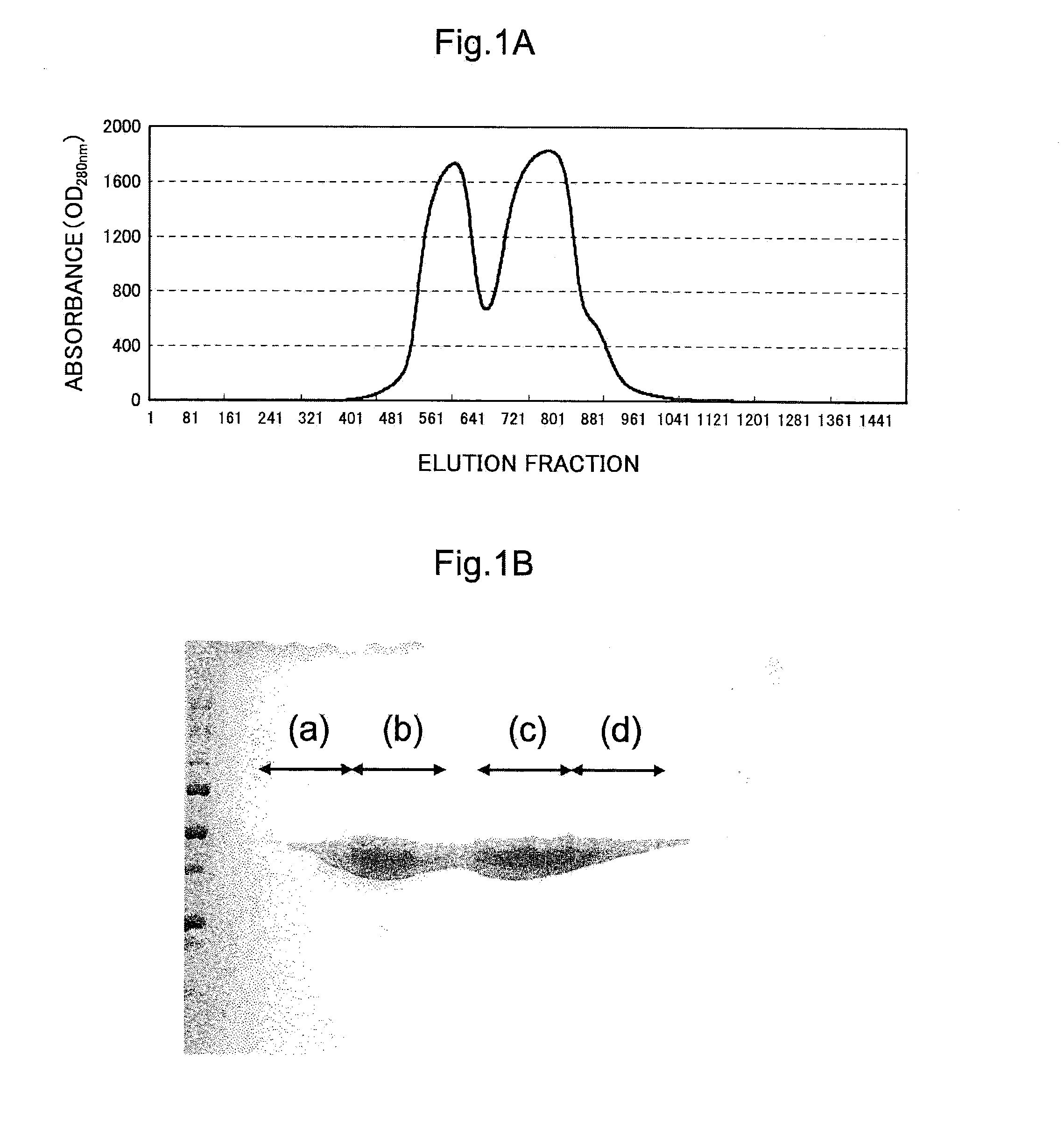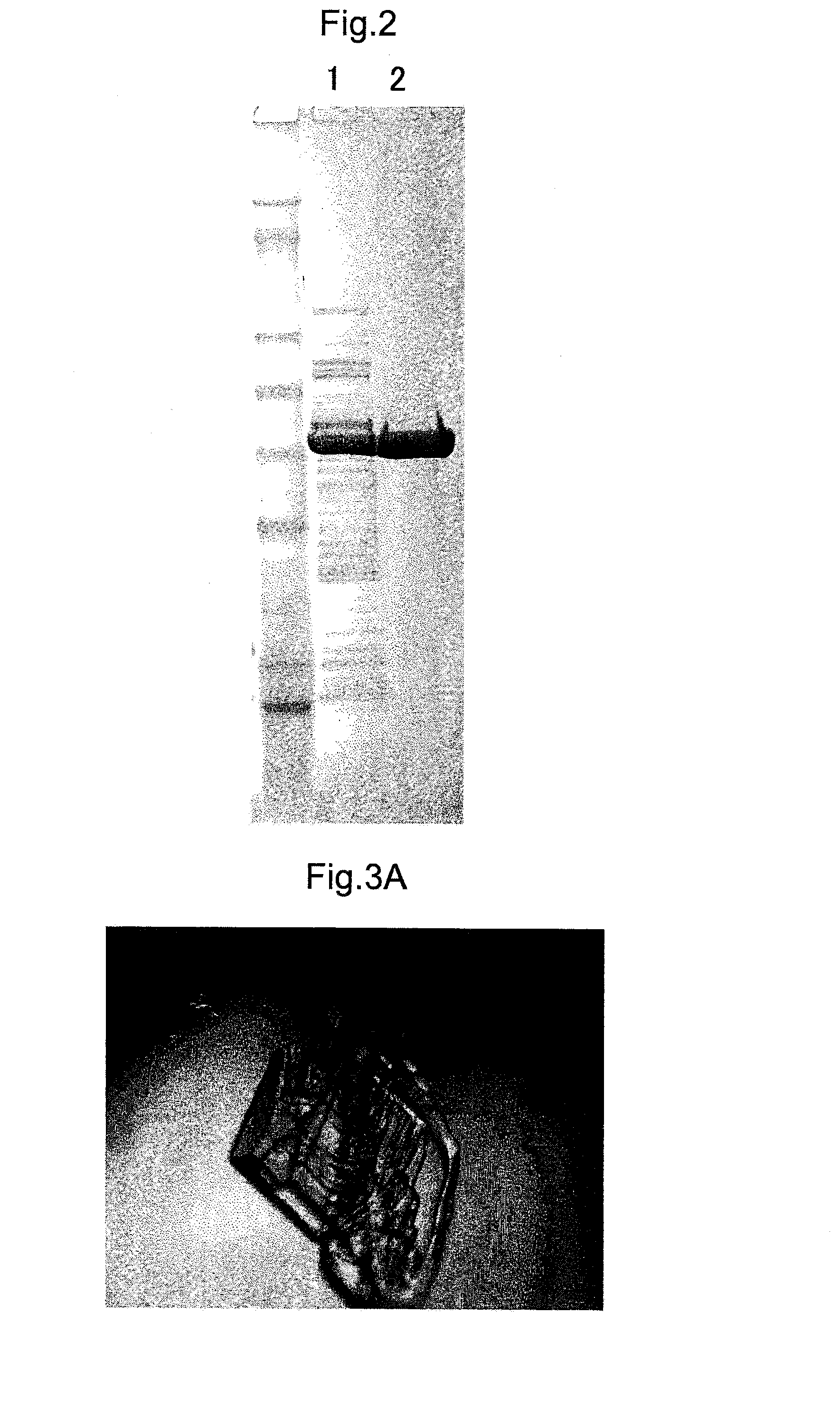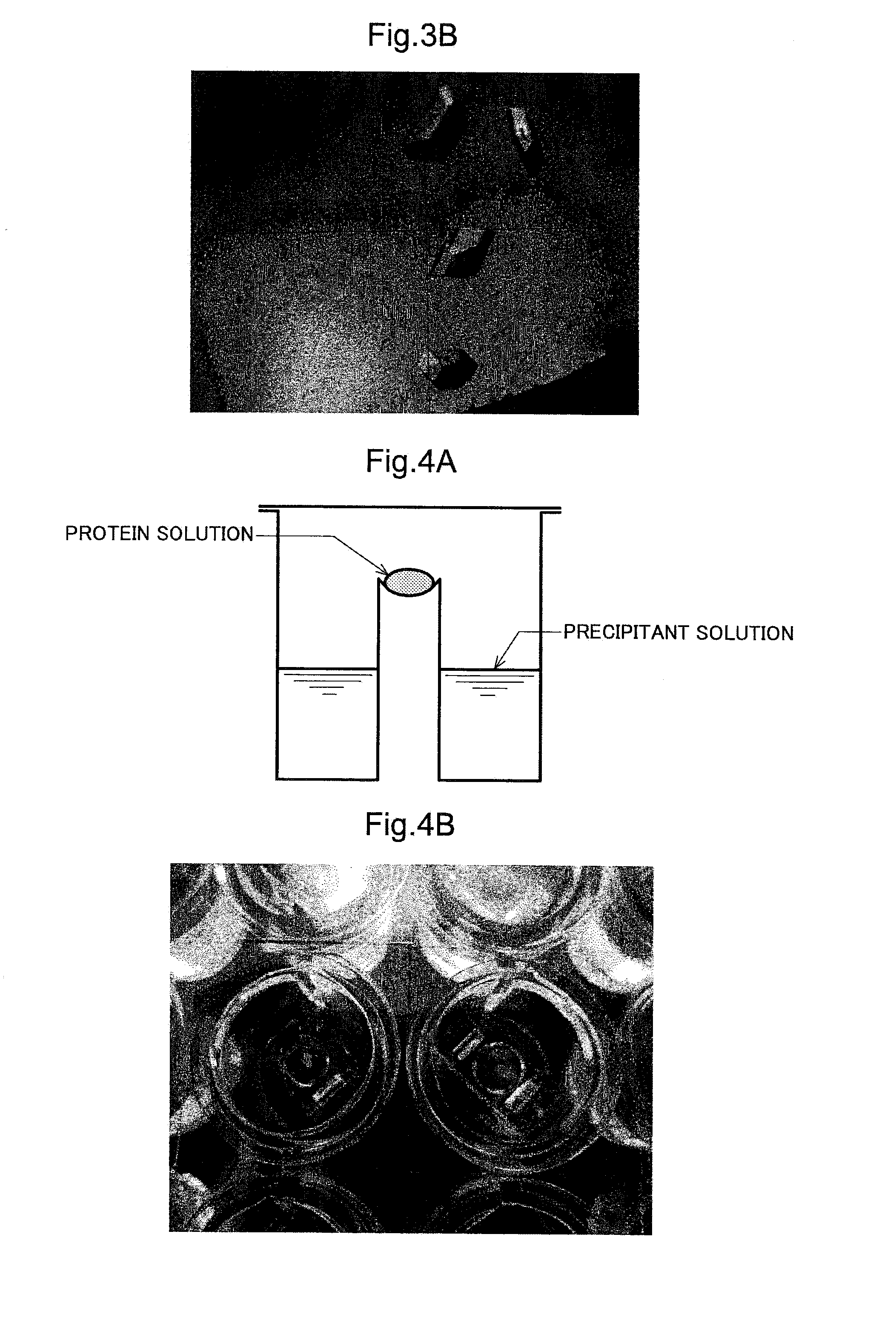Electrode having enzyme crystals immobilized thereon, method for producing electrode having enzyme crystals immobilized thereon, and biological fuel cell and biosensor provided with electrode having enzyme crystals immobilized thereon
a technology of enzyme crystals and electrodes, which is applied in the direction of immobilized enzymes, diaphragms, oxidoreductases, etc., can solve the problems of unstable enzyme on the electrode, inability to obtain the amount of enzyme binding, and inability to achieve electric current, etc., to achieve excellent electrode performance, even smoother manner, excellent electrode performance
- Summary
- Abstract
- Description
- Claims
- Application Information
AI Technical Summary
Benefits of technology
Problems solved by technology
Method used
Image
Examples
example 1
Construction of an Enzyme Expression System, Enzyme Synthesis Through an E. Coli Protein Synthesis System, and Protein Purification
[0164]In order to acquire a high-purity enzyme in the process of crystallization, a genetic engineering technique was used to produce an enzyme as a recombinant protein, which was then purified through a combination of a variety of different forms of chromatography. In particular for the process of crystallization, large quantities of purified enzyme are needed for screening to optimize the crystallization conditions.
[0165]Step 1: Construction of an Expression Vector for Glucose Dehydrogenase from Acinetobacter
[0166]A glucose dehydrogenase gene was acquired by amplification from Acinetobacter calcoaceticus purchased from the National Institute of Technology and Evaluation (NITE), and the sequence thereof served as the basis for rewriting of the sequence so that the amino acids would be the same as the amino acid sequence of Acinetobacter calcoaceticus g...
example 2
Purity Assay of the Purified Enzyme
[0185]In the present example, the question of whether the purified enzyme acquired in example 1 was the high-purity enzyme needed for crystallization was checked. More specifically, this check was carried out by quantifying the enzyme present in the protein solution that was purified by affinity chromatography in example 1, as well as the enzyme present in the protein solution that was purified through the combination of affinity chromatography and ion exchange chromatography. A fraction equivalent to the region in segment (c) in FIG. 1B was used as the sample purified by the combination of affinity chromatography and ion exchange chromatography.
[0186]First, the eluted protein was confirmed in advance of the quantification. The protein solutions following the purifications described above underwent SDS-PAGE electrophoresis, which was followed by staining with the protein staining agent Flamingo Fluorescent Gel Stain (Bio-Rad), and band visualizatio...
example 3
Screening for Enzyme Crystallization Conditions, and Crystallization of the Enzyme
[0191]In the present example, an investigation for the purpose of crystallizing the enzyme purified in example 1 was conducted. A fraction, equivalent to the region in segment (c) in FIG. 1B, of the enzyme acquired in example 1 was used as the target of crystallization, and the crystallization was carried out by the vapor diffusion method. The reason for which segment (c) in FIG. 1B was selected is that when the stability of the enzyme precipitant solution in the buffer solution composition (50 mM Tris-HCl (pH 9.3), 120 mM NaCl, 3 mM CaCl2) was compared on the basis of fractions equivalent to the regions in segments (b) and (c) in FIG. 1B, it was demonstrated that segment (b) had slightly lower stability in storage of several days or longer. For this reason, segment (c), which was preferable also on the basis of the quality and quantity of the enzyme, was selected as being intended for crystallization....
PUM
| Property | Measurement | Unit |
|---|---|---|
| concentration | aaaaa | aaaaa |
| concentration | aaaaa | aaaaa |
| concentration | aaaaa | aaaaa |
Abstract
Description
Claims
Application Information
 Login to View More
Login to View More - R&D
- Intellectual Property
- Life Sciences
- Materials
- Tech Scout
- Unparalleled Data Quality
- Higher Quality Content
- 60% Fewer Hallucinations
Browse by: Latest US Patents, China's latest patents, Technical Efficacy Thesaurus, Application Domain, Technology Topic, Popular Technical Reports.
© 2025 PatSnap. All rights reserved.Legal|Privacy policy|Modern Slavery Act Transparency Statement|Sitemap|About US| Contact US: help@patsnap.com



